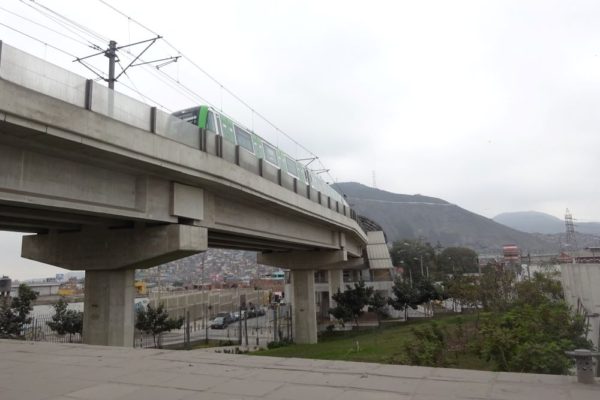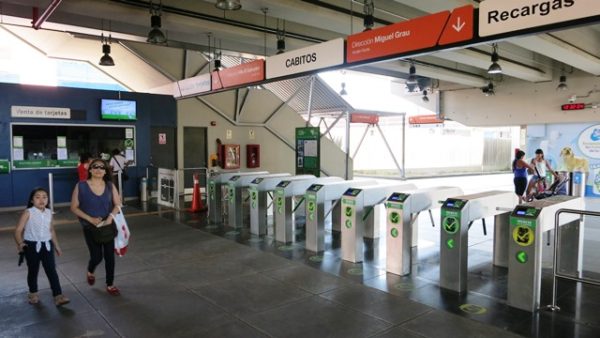In July 2011, Lima inaugurated Line 1 of the Lima Metro, officially dubbed the Metro of Lima and Callao, a light-rail train commonly known as the “tren electrico.” Works originally began on the Metro way back in the mid 80’s but because of the challenging economic, social and political situation at the time, the project was paralyzed and left dormant for over 20 years.
Like the Metropolitano, the aim of the Metro’s Line 1 was to provide mobility to the working-class districts far from central Lima whose commutes ran two to three hours each way. With the Metro, residents of San Juan de Lurigancho and Villa El Salvador can arrive in central Lima in a fraction of the time it took before. In 2019 the Metro Line 1 reached a milestone of 692,000 passengers in one day and a total of 170,280,168 passengers for the year, an increase of 37.5% on the previous year.
Points of Interest

Line 1 has 26 stops and runs above ground on an elevated viaduct for 22 miles from end to end, passing through nine districts of Lima. Some of the stations that international visitors and foreign residents would use are Cultura, Gamarra and Presbitero Maestro stations.
For visitors staying in Miraflores, the Cabitos and Angamos stations, in Surco and San Borja respectively, are both just a ten-minute bus or taxi ride away.
The Cultura station is located in Lima’s convention district, home to the Lima Convention Center, Grand National Theater, National Library and Museum of the Nation.
The Gamarra station is located in Lima’s historic garment district (Gamarra). It would be hard to lose your way, but be careful or you could get lost in La Victoria. The Gamarra station offers a shuttle bus you can take to the Metropolitano’s Estacion Central station in downtown Lima.
The Presbitero Maestro station, named after the historic cemetery of the same name, is located in the Barrios Altos neighborhood of downtown Lima. The Presbitero cemetery is a top 10 place to see in Lima and is highly recommended, just do not stray too far from it or the Metro as Barrios Altos has a reputation for crime.
How to Use

The Metro runs between 5.30 a.m. and 10.30 p.m. from Monday to Friday and between 6 a.m. and 10 p.m. on weekends and public holidays. During rush hour the trains have a frequency of every three minutes. During regular hours and and on weekends the frequency is every six minutes. However it’s best to avoid the Metro during rush hour as there are often long queues of stressed-out commuters vying to enter the stations at that time and things can and often do get ugly.
To use the Metro, you must purchase a rechargeable card for 5 soles ($1.50). Once you have the card, each trip costs 1.50 soles.
Pro tip: Always request a receipt when recharging your metro card as sometimes the card doesn’t register the transaction and unless you have a receipt, the staff are unlikely to help you with a reimbursement.
The air-conditioned carriages are mostly for standing commuters. There are some seats, but these are exclusively reserved for the elderly, handicapped, pregnant women or parent with infant child.
There is an official app which can be found in the Google app store, however at the time of writing it does not tell you how much credit you have on your card even though it promises to do so.
At the time of publish there is only one line in service, “Linea 1,” but they plan to expand it to five. A second line originally slated to begin service in 2018 has been delayed and is now expected to be finished by 2024. Line 2 will be underground for the entirety of the line running from the port city of Callao to the eastern Lima district of Ate. Along its route it will connect the airport with the Metropolitano and Line 1 of the Metro, allowing tourists to take public transport from the plane to the tourist areas of Miraflores, Barranco and San Isidro or further afield.
0z7y94